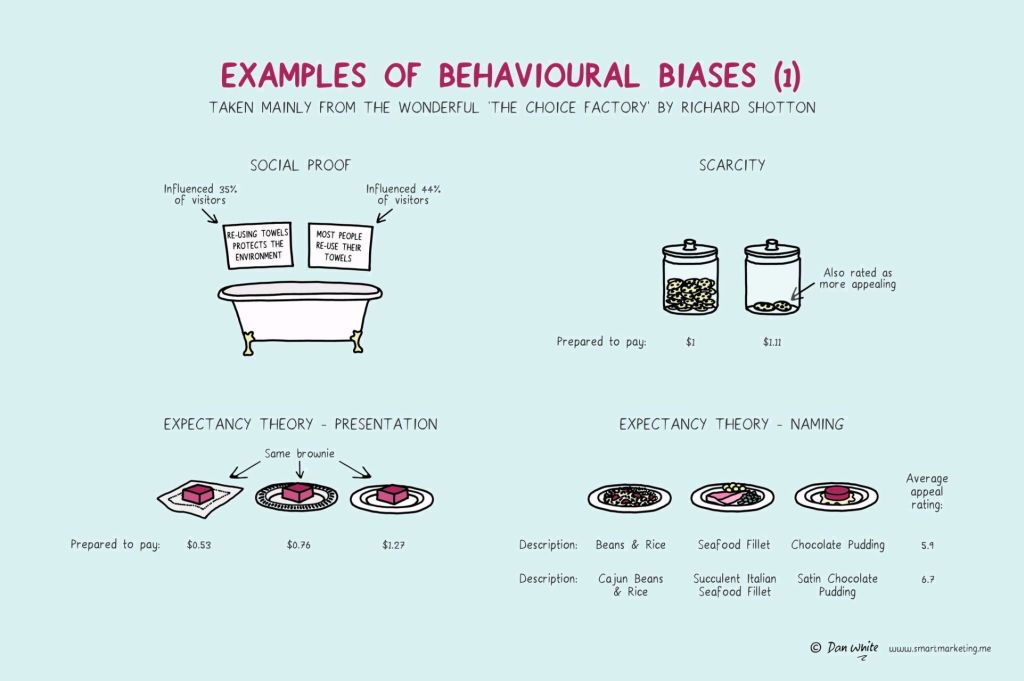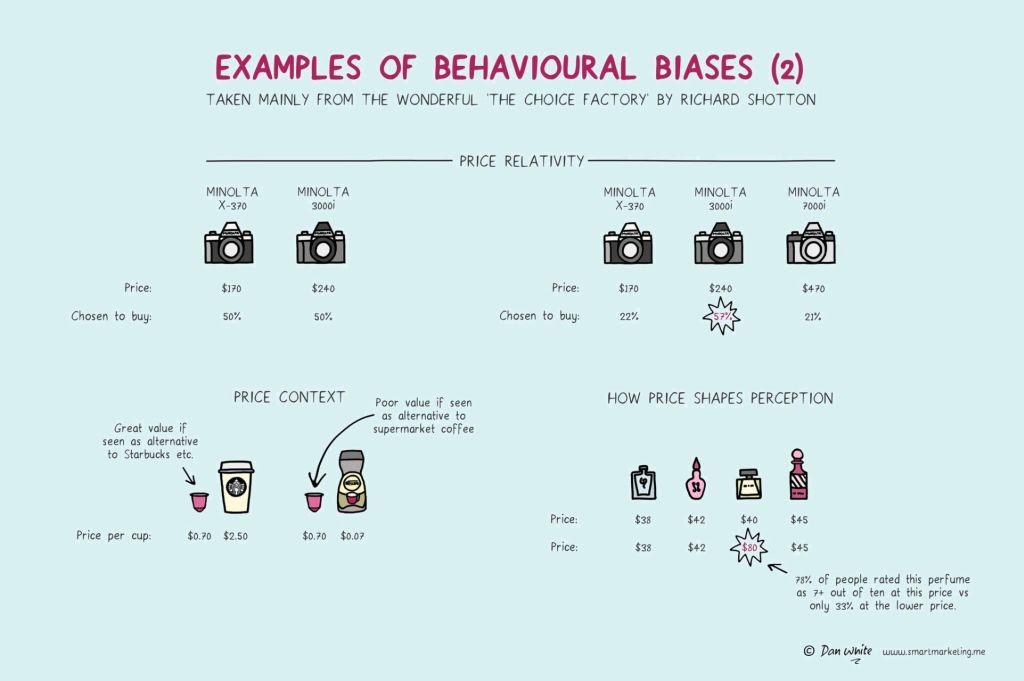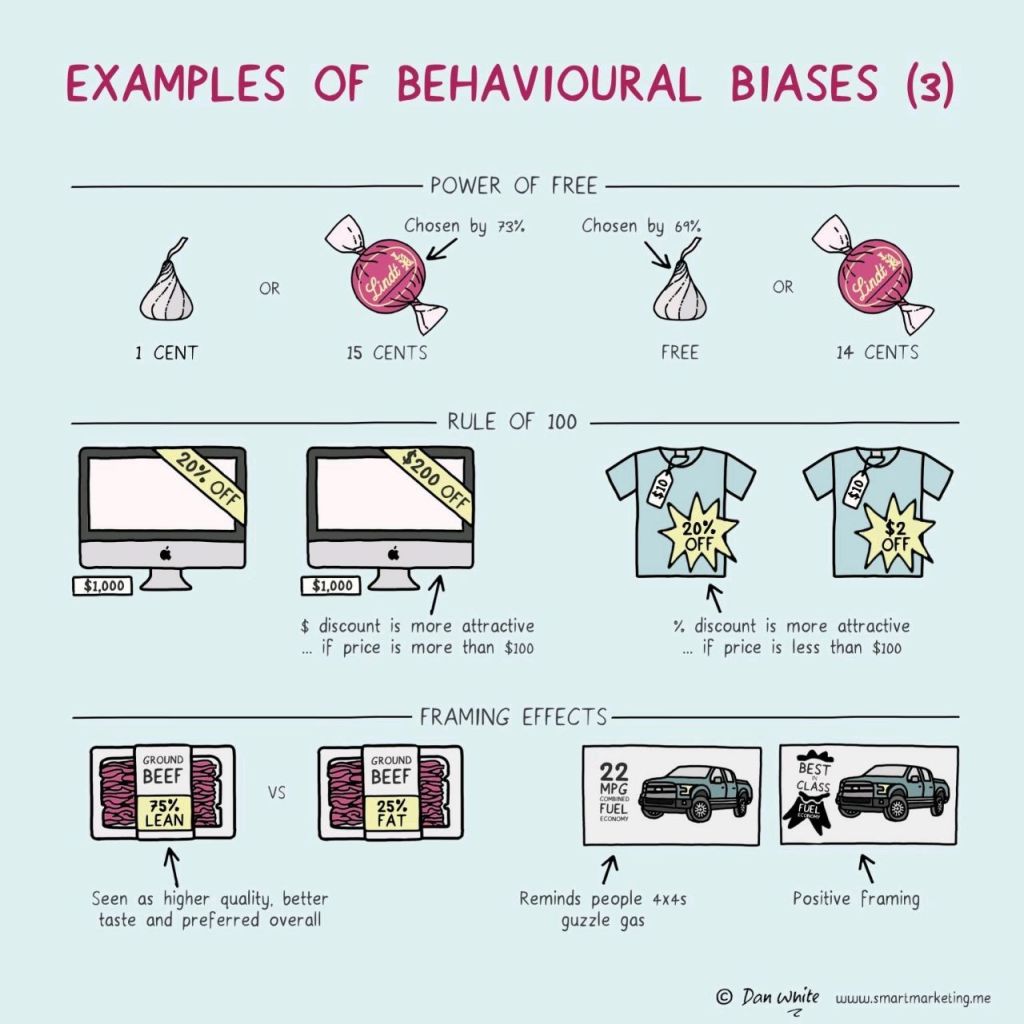I just love psychological experiments around our human biases.
In this case, Dan White visualized some of the psychological biases mentioned in Richard Shotton‘s book “The Choice Factory“.
These biases make for irrational human behavior in the way we make daily decisions.
For example, you will be prepared to pay more for a cookie, when there are less of them in the jar. The generic principle here is that we assign higher valuations to objects under conditions of scarcity.
Once you are aware of such psychological biases, you will start to notice how they are (mis)used nearly everywhere these days. Particularly in sales and marketing. In restaurants, shops, online, and in virtually any case where we act as a consumer, we are subconciously influenced to make certain purchasing decision.
Nudging, is what they call these attempts to manipulate your behavior.
Maybe not so ethical, but still these infographics look amazing and these biases are good to be aware of!



Disclaimer: This page contains one or more links to Amazon.
Any purchases made through those links provide us with a small commission that helps to host this blog.


 “[…] much of Uber’s communication with drivers over the years has aimed at combating shortages by advising drivers to move to areas where they exist, or where they might arise. Uber encouraged its local managers to experiment with ways of achieving this.[…] Some local managers who were men went so far as to adopt a female persona for texting drivers, having found that the uptake was higher when they did.”
“[…] much of Uber’s communication with drivers over the years has aimed at combating shortages by advising drivers to move to areas where they exist, or where they might arise. Uber encouraged its local managers to experiment with ways of achieving this.[…] Some local managers who were men went so far as to adopt a female persona for texting drivers, having found that the uptake was higher when they did.” “For months, when drivers tried to log out, the app would frequently tell them they were only a certain amount away from making a seemingly arbitrary sum for the day, or from matching their earnings from that point one week earlier.The messages were intended to exploit another relatively widespread behavioral tic — people’s preoccupation with goals — to nudge them into driving longer. […] Are you sure you want to go offline?” Below were two prompts: “Go offline” and “Keep driving.” The latter was already highlighted.”
“For months, when drivers tried to log out, the app would frequently tell them they were only a certain amount away from making a seemingly arbitrary sum for the day, or from matching their earnings from that point one week earlier.The messages were intended to exploit another relatively widespread behavioral tic — people’s preoccupation with goals — to nudge them into driving longer. […] Are you sure you want to go offline?” Below were two prompts: “Go offline” and “Keep driving.” The latter was already highlighted.”